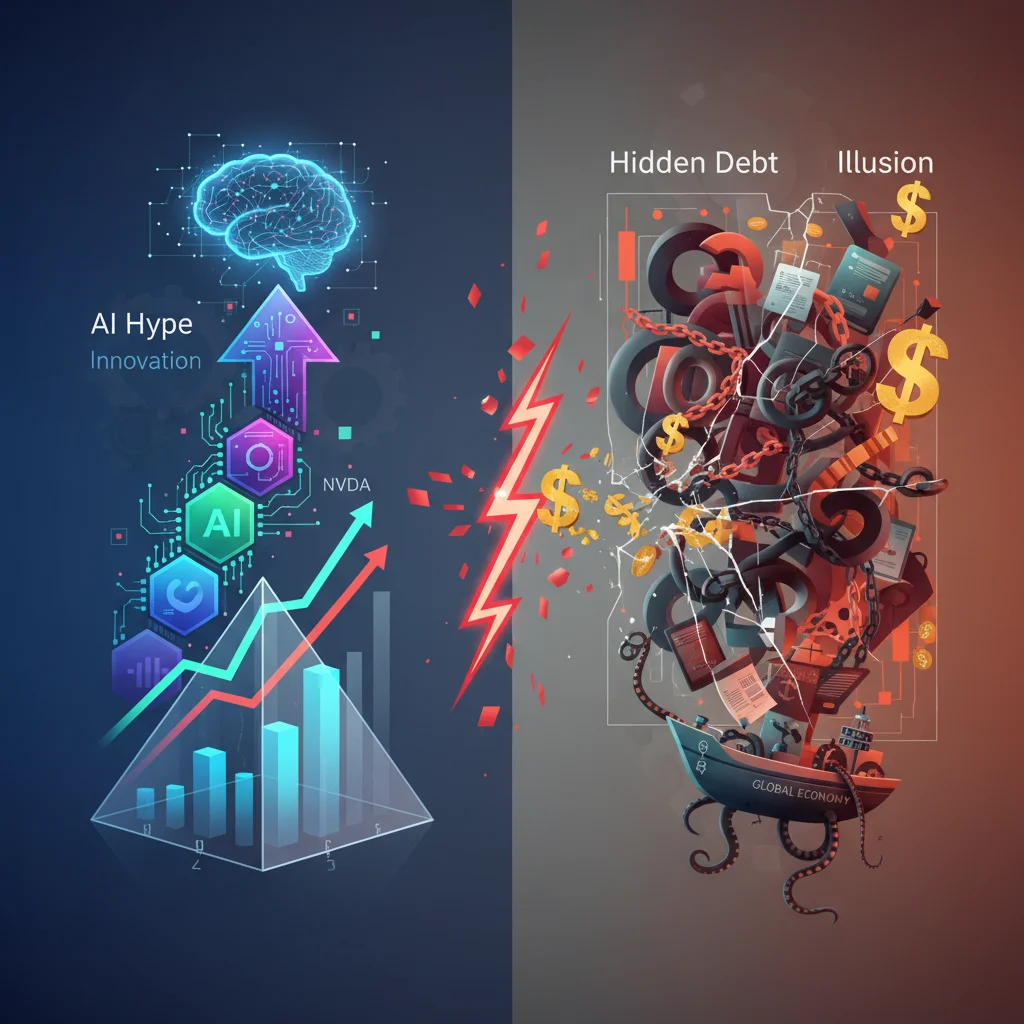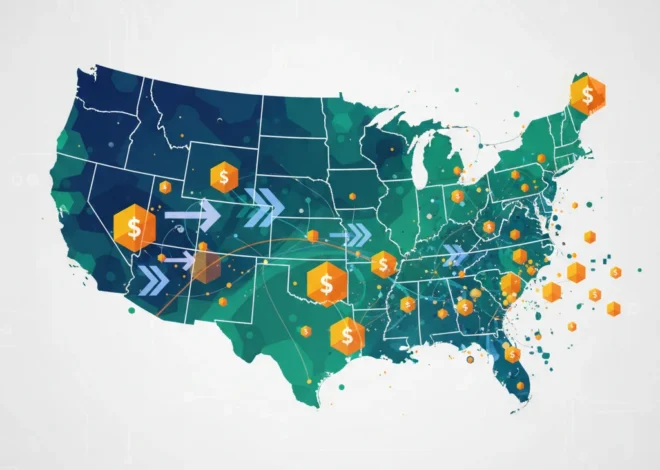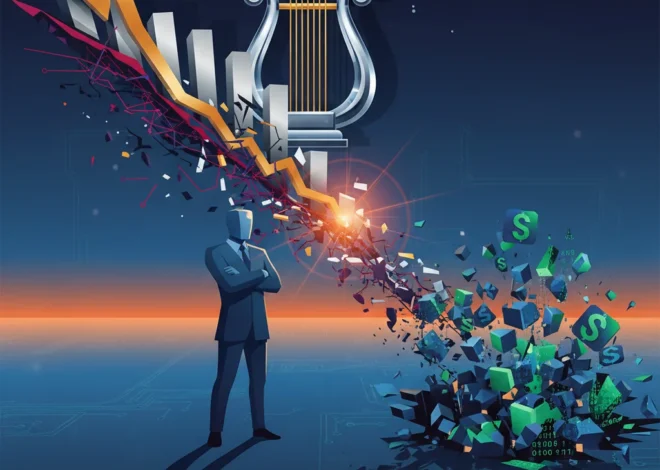
AI Hype and Hidden Debt: Are We on the Brink of the Next Financial Crisis?
The Roaring Twenties of AI: Innovation or Illusion?
The global economy is currently captivated by the meteoric rise of Artificial Intelligence. Companies like Nvidia are seeing their stock market valuations soar into the trillions, reminiscent of the dot-com boom of the late 1990s. The promise of revolutionary productivity gains and technological advancement has ignited a firestorm of investment, with capital pouring into every corner of the AI ecosystem. From large language models to autonomous systems, the narrative is clear: AI is the future, and investors are terrified of being left behind.
But beneath this shimmering surface of innovation, seasoned professionals in finance and economics are beginning to hear familiar, unsettling echoes of the past. The relentless hype, the sky-high valuations detached from current earnings, and the pervasive fear of missing out (FOMO) are all classic hallmarks of a speculative bubble. While the transformative potential of AI is undeniable, the financial frenzy surrounding it raises a critical question: Is this boom sustainable, or are we inflating a bubble destined to pop?
This question alone is cause for concern. However, another, more opaque force is operating in the background, one that could turn a potential stock market correction into a full-blown systemic crisis. This force is the vast and growing world of “shadow banking.” This multi-trillion dollar ecosystem of non-bank lenders operates outside the stringent regulations imposed on traditional banking, and it may be the hidden transmission mechanism that connects an AI bubble to the stability of the entire global economy.
Deconstructing the AI Bubble: Is This Time Really Different?
To understand the risk, we must first dissect the anatomy of the potential AI bubble. Unlike many of the vaporware companies of the dot-com era, today’s AI leaders are generating substantial revenue and tangible products. This has led many to argue that “this time is different.” And in some ways, it is. The application of AI in fields from medicine to logistics is already creating real-world value.
However, the valuation of many companies seems to have priced in decades of flawless execution and market dominance. A recent analysis noted that the forward price-to-earnings ratios for some leading tech stocks are at levels not seen since the turn of the millennium (source). When market sentiment is driven more by narrative than by numbers, the foundations become unstable.
Let’s compare the market dynamics of then and now:
| Characteristic | Dot-Com Bubble (Late 1990s) | AI Boom (2020s) |
|---|---|---|
| Core Technology | The commercialization of the internet | Generative AI and Machine Learning |
| Market Leaders | Cisco, Microsoft, Pets.com | Nvidia, Microsoft, OpenAI, Alphabet |
| Investor Psychology | FOMO, belief in a “new economy” | FOMO, belief in an “AI revolution” |
| Valuation Metric | Often based on “eyeballs” or potential, not profit | High P/E ratios, but often with real revenue growth |
| Key Risk | Companies with no viable business model | Hype outpacing realistic adoption and profitability timelines |
The primary danger of a bubble is not just that stock prices will fall, but the contagion that follows. A sharp correction in the tech-heavy Nasdaq could wipe out trillions in paper wealth, leading to reduced consumer spending, corporate layoffs, and a broader economic slowdown. This is where the second threat, shadow banking, enters the picture.
The Ultimate Risk Analyst: What Investors Can Learn from War Photographer Lynsey Addario
Unmasking the Shadows: The Rise of Private Credit
The term “shadow banking” often conjures up sinister images, but its technical name is Non-Bank Financial Intermediation (NBFI). It refers to any lending, trading, or credit-related activity that occurs outside the traditional, heavily regulated banking system. Since the 2008 financial crisis, regulations like Dodd-Frank and Basel III have made it more difficult and expensive for traditional banks to engage in certain types of lending. This created a vacuum that was eagerly filled by private equity firms, hedge funds, and specialized credit funds.
This sector, often called private credit, has exploded in size, with estimates placing its value at well over $1.7 trillion globally. These entities are not subject to the same capital reserve requirements or transparency rules as commercial banks. They can take on more risk, use higher leverage, and operate with a level of opacity that makes it difficult for regulators to assess the true level of risk in the financial system.
The 2008 crisis was, at its core, a shadow banking crisis. It was the collapse of opaque, unregulated financial products (like mortgage-backed securities held in off-balance-sheet vehicles) that triggered the global meltdown. Today, the products are different, but the underlying structure—leveraged, opaque, and interconnected—is eerily similar.
The Dangerous Intersection: How AI and Shadow Banking Fuel Each Other
The AI boom and the shadow banking system are not two separate risks; they are a deeply interconnected, self-reinforcing loop. The combination could prove far more volatile than either threat on its own.
Here’s how they amplify each other:
- Fuel for the Fire: Shadow banks, with their higher risk tolerance and vast pools of capital, are pouring money into the AI sector. They finance speculative startups, participate in late-stage funding rounds at inflated valuations, and use complex derivatives for leveraged trading in AI-related stocks. This influx of “easy money” from the unregulated sector helps inflate the bubble faster and higher than it might otherwise go.
- Concentrated, Opaque Risk: When a traditional bank makes a loan, it’s highly regulated and reported. When a private credit fund lends to a portfolio of AI startups, the details are murky. If the AI bubble were to burst, it would trigger defaults not on the transparent books of major banks, but within the opaque portfolios of these shadow lenders. As one expert mentioned, the lack of transparency means “we won’t know who is holding the risk until it’s too late” (source).
- The Contagion Mechanism: The final, critical piece is interconnectedness. Shadow banks are not islands. They borrow from traditional banks (a practice called warehouse lending), and their investors are often pension funds and endowments. A crisis in the private credit market, triggered by an AI downturn, would not stay contained. It would cause losses for the traditional banks that lend to them and for the pension funds that invested in them, sending shockwaves through the entire regulated financial system.
This feedback loop poses a significant threat to the broader economy:
| Phase | Action in the AI Market | Reaction in the Shadow Banking System | Impact on the Global Economy |
|---|---|---|---|
| Inflation | AI stock valuations soar due to hype and promise. | Private credit funds provide massive, leveraged loans to AI firms and investors. | Economic growth appears strong, driven by tech investment. |
| The Pop | A market correction occurs; AI stocks plummet 30-50% or more. | Loans default, leveraged positions are wiped out, credit funds face a liquidity crisis. | A credit crunch begins as shadow lenders freeze activity. |
| Contagion | AI companies lay off staff and cancel projects. | Shadow banks default on their loans *from* traditional banks. Pension funds write down losses. | Mainstream banks tighten all lending, leading to a broad recession. |
The Great London Exodus: A Demographic Time Bomb for the UK Economy?
Navigating the Future: Strategy for Investors and Leaders
The confluence of an AI bubble and the shadow banking system doesn’t guarantee a crash, but it significantly elevates the systemic risk in the global economy. The challenge is that financial technology and innovation, including blockchain and algorithmic trading, act as accelerants. They increase the speed and efficiency of capital flows, which is a benefit in stable times but can dramatically quicken the pace of contagion during a crisis.
So, what can be done? For policymakers, the answer lies in casting a brighter regulatory light on the NBFI sector without stifling its ability to provide crucial credit to the economy. Increased transparency requirements and a better understanding of the links between the shadow and traditional banking systems are paramount.
For investors and business leaders, the path forward requires a return to first principles:
- Scrutinize Fundamentals: Look beyond the AI hype. Invest in companies with strong business models, real earnings, and a clear path to sustainable profitability. Do not mistake a rising tide for individual genius.
- Understand Counterparty Risk: In business and finance, ask who is on the other side of the trade. Who is financing your partners or competitors? A reliance on opaque private credit could be a hidden vulnerability in your supply chain or investment portfolio.
- Diversify Intelligently: While a technology allocation is crucial for any modern portfolio, over-concentration in the most hyped names is a recipe for disaster. Ensure your investments span different sectors, geographies, and asset classes.
- Advocate for Transparency: As leaders, support financial systems that are both innovative and transparent. The long-term health of the economy depends on a framework where risk can be accurately priced and managed, not hidden in the shadows.
The AI revolution is real, and its long-term impact on the economy will likely be profound. However, history teaches us that every major technological shift is accompanied by a period of financial mania. The dot-com bubble didn’t negate the importance of the internet, but its collapse caused significant economic pain. Today, the combination of a similar technological fervor with a larger, more complex, and more opaque shadow banking system than existed in 2008 creates a new and potent cocktail of risk. Navigating the coming years will require not just an appreciation for innovation, but a healthy respect for the enduring lessons of financial history.


